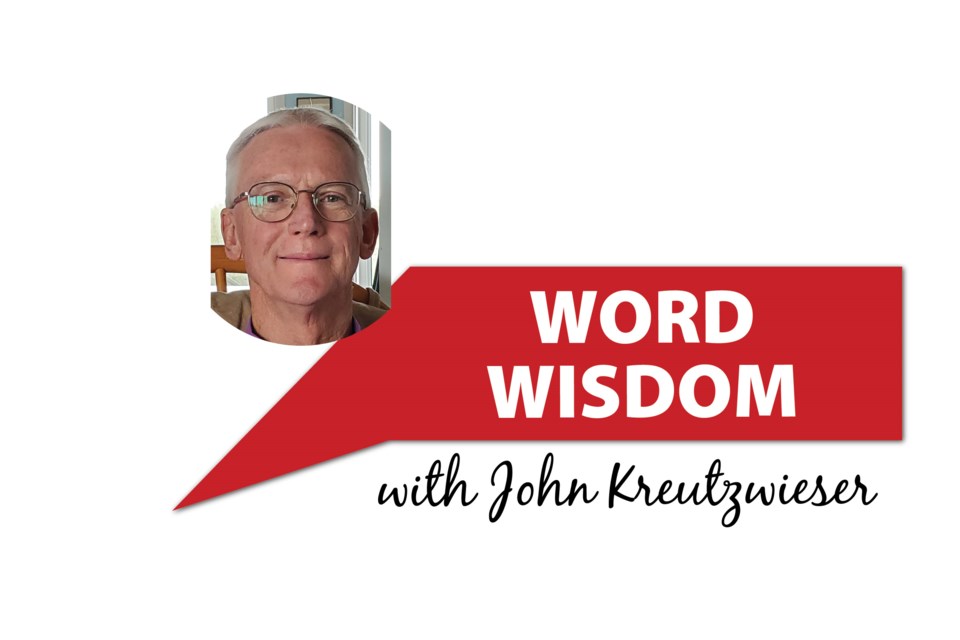Many words morph over time with respect to their usage and meaning. One can often follow the handling of a word through the centuries and perceive how new implications come about. This week I will focus on the word orientate.
Orientate was first used in English in 1848 to mean to turn or face to the east. It comes from the Latin oriens, the present participle of oriri, meaning to rise or get up. The Latin orient or oriens acquired a directional emphasis as the sun rises in the east to make its first appearance of the day. Thus, the word morphed in Latin with a derived meaning, and continues to mutate in the English language.
In English, orient came to identify countries that were positioned east of Europe. Eventually the Orient referred to countries of eastern Asia, such as China and Japan. English churches were orientated, meaning that the main altar of the building was placed at the east end of the church. It was tradition that the congregation faced east in anticipation of the return of Christ from the eastern sky. Jesus said, “For as the lightning comes from the east and shines as far as the west, so will be the coming of the Son of Man.” (Matthew 24:27) You will notice in most older graveyards the bodies are positioned to face the east, ready for the resurrection at the coming of Jesus Christ. The prophet Ezekiel wrote, “Then he led me to the gate, the gate facing east. And behold, the glory of the God of Israel was coming from the east.” (Ezekiel 43:1-2)
The word orientate transformed from referencing the east to the sense of arranging position in relation to any point on a compass. Travellers would orientate themselves to a landmark to determine the course of their journey or to keep from getting lost. Mountaineers find it hard to orientate themselves in clouds or fog in their climbing expeditions for they cannot see a familiar sight. The word did not imply any specific relation to an eastern direction.
Next, orientate came to be used to set right by adjusting to facts or principles. Details and truths initiated a change in understanding. One would be orientated to a different interpretation of a situation based on new information. To orientate was to acquaint someone who held faulty perceptions to an existing condition or principle that could be proven correct. The word came to be used in the sense to familiarize, initiate, or introduce. Thus, in 1942 colleges established Orientation Days to introduce or familiarize new students with the campus and study programs. It took him some time to orientate himself in his new school.
The word morphed into the implication of taking one’s proper bearings mentally, in other words, to be focused. Orientate began to be combined with other words in this sense, as a person being results-orientated or family- orientated. Programs are developed by social agencies to orientate clients to specific concentrations applicable to them.
In the realm of publishing and word processing, orientation is used to describe the layout of the item or page, often giving choices as to portrait or landscape for paper orientation. Whenever I print something on my printer, I need to orientate the paper properly or I do not get the results I was hoping to achieve.
You can observe how a word can change its meaning slightly through the years by tracing the usage of orientate. How the position of an 8.5” by 11” piece of paper was related to the sun rising in the east would never be determined if we did not chart the continually morphing of words in the English language. So, use your words wisely.
Columnist John Kreutzwieser loves to research words and writes this weekly Word Wisdom column for Moose Jaw Express/MooseJawToday.com. He has an interest in the usage, origin, and relevance of words for society today. Greek and Latin form the basis of many words, with ancient Hebrew shedding light on word usage.
John would like to know if anyone has a sincere interest in a relevant word that he could possibly research for an upcoming column. If so, please send your requests to [email protected] . Words will be selected according to relevance and research criteria. We cannot confirm that all words will be used.
The views and opinions expressed in this article are those of the author, and do not necessarily reflect the position of this publication.




